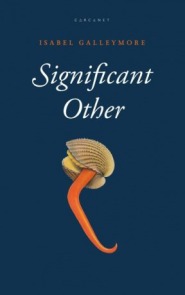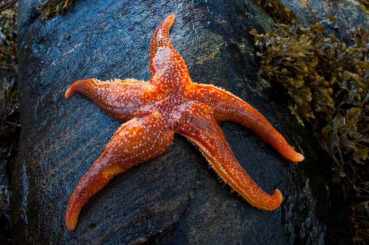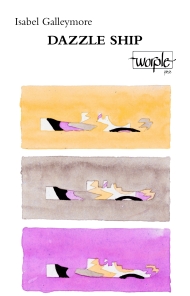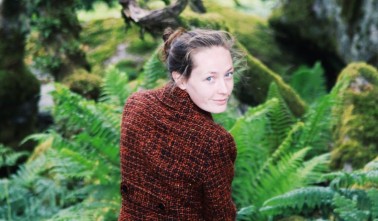As in the previous four years, I am posting – over the summer – my reviews of the 5 collections chosen for the Forward Prizes Felix Dennis award for best First Collection. This year’s £5000 prize will be decided on Sunday 20th October 2019. Click on this link to access all 5 of my reviews of the 2018 shortlisted books (eventual winner Phoebe Power), here for my reviews of the 2017 shortlisted books (eventual winner Ocean Vuong), here for my reviews of the 2016 shortlisted books (eventual winner Tiphanie Yanique), here for my reviews of the 2015 shortlisted books (eventual winner Mona Arshi).
The full 2019 shortlist is:
Raymond Antrobus – The Perseverance (Penned in the Margins)
Jay Bernard – Surge (Chatto & Windus)
David Cain – Truth Street (Smokestack Books) – reviewed here.
Isabel Galleymore – Significant Other (Carcanet)
Stephen Sexton – If All the World and Love Were Young (Penguin Books)
 Isabel Galleymore’s Significant Other cuts incisively and deliciously against several fashionable poetic grains in being committed yet dispassionate, quietly concise not shrill, impersonal rather than nakedly biographical. In Carcanet’s blurb, Rachael Boast praises the book for its “simplicity, empathy and sheer Blakean joy”; in truth, it needs to be praised for far tougher virtues such as its probing intelligence, its metaphorical brilliance, its lover’s relational sense of angst. Galleymore certainly possesses an astounding gift for figurative language. It’s tempting to allude to Craig Raine’s Martianism in this context, though Galleymore interrogates the metaphorical process in far more important and interesting ways.
Isabel Galleymore’s Significant Other cuts incisively and deliciously against several fashionable poetic grains in being committed yet dispassionate, quietly concise not shrill, impersonal rather than nakedly biographical. In Carcanet’s blurb, Rachael Boast praises the book for its “simplicity, empathy and sheer Blakean joy”; in truth, it needs to be praised for far tougher virtues such as its probing intelligence, its metaphorical brilliance, its lover’s relational sense of angst. Galleymore certainly possesses an astounding gift for figurative language. It’s tempting to allude to Craig Raine’s Martianism in this context, though Galleymore interrogates the metaphorical process in far more important and interesting ways.
Her main subject is the natural world and our relationship with it and the book is studded with a number of bravura pieces which – as Ted Hughes put it in Poetry in the Making (Faber, 1967) – manage to ‘capture’ something of creaturely lives. But rather than foxes and hawks, Galleymore writes about starfish, mussels, slipper limpets, goose barnacles, seahorses, whelks, frogs, spiny cockles and crabs. As Hughes’ versions of the natural world – even a harebell or snowdrop – tended towards violence, Galleymore’s creatures tend toward sensuality and – even when the behaviour is predatory – the descriptions have a sexual quality to them. So the starfish’s attack on a mussel rises to a climax when
[. . . ] the mussel’s jaw
drops a single millimetre. Into this cleft
she’ll press the shopping bag of her stomach
and turn the mollusc into broth.

There is indeed a sort of empathy here but, at its best, this kind of metaphorical language – the shopping bag, the broth – is accurately based on precise observation of actual behaviours.
 But Galleymore also sees dangers. In her 2014 Worple Press pamphlet, Dazzle Ship, the poem ‘Forest’ sought to limit such likening of one thing to another: “It shouldn’t go further / than this flirt and rumour”. The consequence of this failure of (for want of a better word) tact is itself imaged in the sloth that mistakes her own limb for “an algae-furred branch” and plummets “through the tangle / of the forest canopy // holding only onto herself”. ‘Forest’ is not included in Significant Other, but a closely related image occurs in ‘Once’. This little poem tracks human relations with nature from our early fears of “being eaten”, through the beginnings of farming, the awakening of metaphors comparing ourselves to Nature, towards the Romantic notion of being “at one”. Yet often there is a bullying, colonising quality to such a sense of oneness – we co-opt Nature into our world on our own terms. In ‘Once’, we are “at one and lost / as the woman wrapped in her lover’s arms / who accidentally kisses herself”. Such ludicrous, solipsistic love-making echoes the sloth’s mistake and downfall.
But Galleymore also sees dangers. In her 2014 Worple Press pamphlet, Dazzle Ship, the poem ‘Forest’ sought to limit such likening of one thing to another: “It shouldn’t go further / than this flirt and rumour”. The consequence of this failure of (for want of a better word) tact is itself imaged in the sloth that mistakes her own limb for “an algae-furred branch” and plummets “through the tangle / of the forest canopy // holding only onto herself”. ‘Forest’ is not included in Significant Other, but a closely related image occurs in ‘Once’. This little poem tracks human relations with nature from our early fears of “being eaten”, through the beginnings of farming, the awakening of metaphors comparing ourselves to Nature, towards the Romantic notion of being “at one”. Yet often there is a bullying, colonising quality to such a sense of oneness – we co-opt Nature into our world on our own terms. In ‘Once’, we are “at one and lost / as the woman wrapped in her lover’s arms / who accidentally kisses herself”. Such ludicrous, solipsistic love-making echoes the sloth’s mistake and downfall.
Several commentators have picked out ‘Choosing’ as a significant poem in this book, most seem to take its statement about loving all “eight million differently constructed hearts” (the number of species currently living on earth) as a genuine example of environmental good practice. But there is irony at work here when the poem goes on to indicate the difficulty of achieving such a multiplicity of loves, using incomplete statements, awkward repetitions and – as Galleymore often does – the language of human lovers to express it. So:
To say nothing will come between us,
to stay benignly intimate was –
sometimes not calling was easier –
sometimes I’d forget to touch you
and you, and you [. . .]”
And these inevitable failures to live up to such ideally multivalent webs of relationships lead to “breakups” (in the lover’s parlance) which I take to mean extinctions (biologically speaking):
like the others it seemed you’d just popped out
for a pint of milk and now
nothing’s conjured hearing your name
So Galleymore sees figurative language not only in poetic terms, but also as its shapes all human knowledge. ‘Uprising’ (also in Dazzle Ship only) compares the fluffy seed-head of a dandelion to a microphone, ready to transmit “a hundred / smaller scaffoldings // of a thought or an idea”. But such likening of one thing to another (when taken beyond flirt and rumour) like any human relationship is at risk of an unbalanced power dynamic. ‘Seahorse’ is unusual in this collection, opening as it does in the human world, in a restaurant, a man speaking for the woman he’s with, his presumption described as “shocking”. Yet the narrator seems complicit in such a relationship too:
like a hand shaping itself inside another’s
the way my hand tucks into his
like a difference pretending it’s not.
Like two separate identities, one pretending not to be really separate at all. Or not being allowed to regard itself as separate at all. This is close to metaphor as a form of gaslighting.

In several poems, Nature is the exploited, submissive partner but in ‘No Inclination’ it is shown fighting back. The metaphors we have long used to domesticate and describe the natural world are shown to be breaking down:
[. . .] a surprising number of gales
didn’t know what it was to howl.
The woebegone voice of the willow
confirmed it had no reason to weep.
It is our presumptuous, mansplaining tendency not to see Nature for what it is – but only in our own invented metaphors for it – that contributes to our planet’s endangerment. Our assumption of the benign, life-giving smile of the sun (Telly Tubbies anyone?) is not something we can rely on for much longer (record UK temperatures anyone?):
It couldn’t be denied: that fiery mass
possessed no inclination to smile.
Household after household poured
whiskey-cokes to toast the news,
the ice melting fast in their drinks.
 In ‘Significant Other’ itself, a cloud may be likened to a tortoise but the cocktail of power and presumption is complex; the relationship is not reciprocal. As the tortoise owner once erroneously anthropomorphised her pet, so in later life she mistook her lover’s sexual fidelity. The truth is not always as we wish it or as our metaphors construct it. At the close of the poem, the tortoise continues in its own “tortoisey” way, resisting any further efforts to colonise it, to humanise it. It is and remains significantly Other. And in this cool-toned, often fascinating book, Galleymore knows the Other needs to be allowed its distance, allowed its dynamic, changeable difference, its wealth of richness in being different, whether that Other is a lover or the natural world itself:
In ‘Significant Other’ itself, a cloud may be likened to a tortoise but the cocktail of power and presumption is complex; the relationship is not reciprocal. As the tortoise owner once erroneously anthropomorphised her pet, so in later life she mistook her lover’s sexual fidelity. The truth is not always as we wish it or as our metaphors construct it. At the close of the poem, the tortoise continues in its own “tortoisey” way, resisting any further efforts to colonise it, to humanise it. It is and remains significantly Other. And in this cool-toned, often fascinating book, Galleymore knows the Other needs to be allowed its distance, allowed its dynamic, changeable difference, its wealth of richness in being different, whether that Other is a lover or the natural world itself:
‘I Keep You’
at a difference:
a thought I won’t allow myself
to think for thinking
it’s a matter of time
till you, a cargo
ship of foreign goods,
cross my kitchen table
like a butter dish.

Thank you Martyn. Great review.
LikeLiked by 1 person
[…] Isabel Galleymore – Significant Other (Carcanet) – reviewed here. […]
LikeLike
[…] Isabel Galleymore – Significant Other (Carcanet) – reviewed here. […]
LikeLike
[…] Isabel Galleymore – Significant Other (Carcanet) – reviewed here. […]
LikeLike